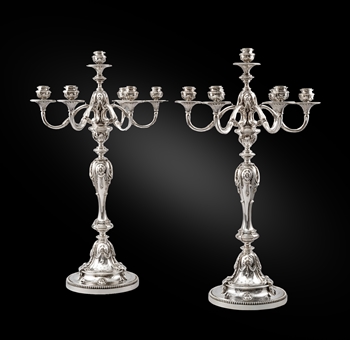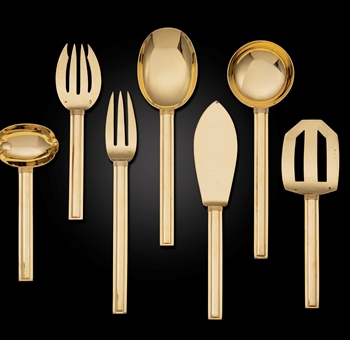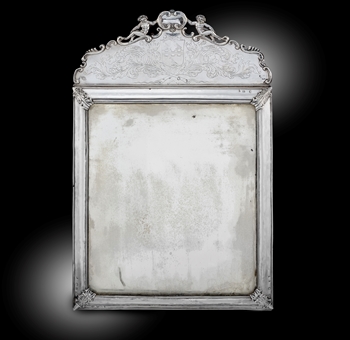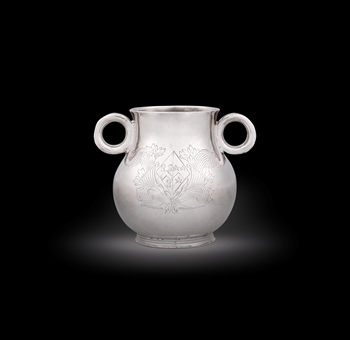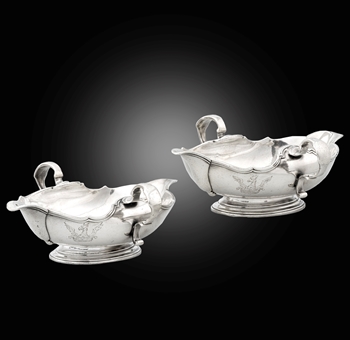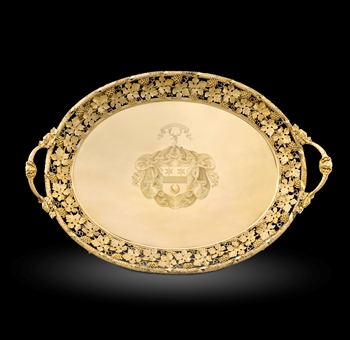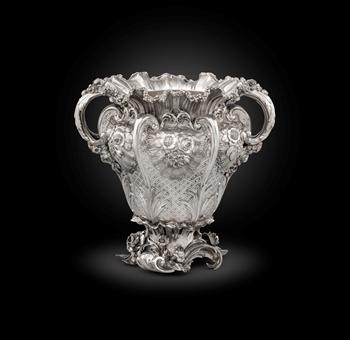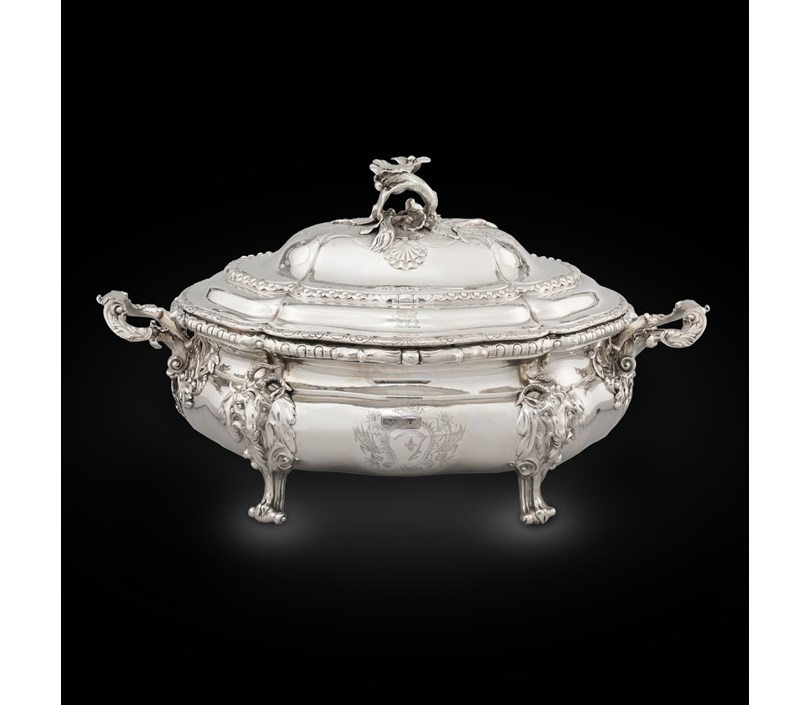The shaped oval tureen with four impressive cast goat-head scrolled feet with cast acanthus handle that terminate on lion masks with lolling tongues surrounded by shells and scale-work. The domed cover chased with shells and scale-work. The handle stylised as flowering pumpkin.
Keele Hall and the Sneyds Keele Hall is a 19th-century mansion house and is a Grade II listed building. The manor of Keele was held by the Sneyd family continuously from 1544 to 1948. A large gabled Tudor style house was built on the hill in 1580. In 1651 Colonel Ralph Sneyd fought on the Royalist side in the English Civil War and was killed. The family’s fortunes fluctuated, with a brief heyday in the 18th century when a Sneyd commanded the Royal bodyguard at Buckingham Palace. The family’s history can be partly traced in the heraldic devices on the walls, including one commemorating a battle honour awarded against the French at Poitiers in 1356. In the 19th century the family prospered as landowners, coal and iron owners and also brick and tile manufacturers. The original house was remodelled several times and finally replaced entirely between 1851 and 1861 with the present Keele Hall. The celebrated Victorian architect Anthony Salvin, who also worked on the renovations at Windsor Castle, Alnwick castle and the Houses of Parliament, designed an imposing building in mock Jacobean style. It is built of local red sandstone with contrasting Hollington stone dressings. A Latin inscription around the roof frieze may be translated as "In 1860 Ralph Sneyd undertook the reconstruction of this house which had been built by his ancestor Ralph Sneyd in 1580". The three-storey castellated entrance front has four octagonal turrets and the other fronts have curved gables. The eastern façade overlooks sweeping lawns down to an ornamental lake, arboretum and extensive woodlands, which were landscaped by William Emes in the 18th century.
Paul de Lamerie arrived in England with his Huguenot parents in or before 1689, having been baptized at 's Hertogenbosch in the Netherlands in 1688. In 1703 he was apprenticed to the Huguenot goldsmith Pierre Platel, and after being admitted to the freedom of the Goldsmiths' Company, he registered his first mark and set up a workshop in Windmill Street, Soho, in 1712. He took thirteen apprentices between 1715 and 1749 who paid premiums varying between £10 and £45m In 1716 he married Louisa Juliott, also a Huguenot, and by her had six children, three of whom died in childhood. Little more of his personal history is known, although his career in the Goldsmiths' Company is comparatively well documented. By 1717, he was already referred to as 'the King's Silversmith' but again in a complaint 'for making and selling Great quantities of Large Plate which he doth not bring to Goldsmith's Hall to be mark't according to Law.' He joined the livery in 1717; fourteen years later he was elected to the court of assistants. In 1743 he was appointed fourth warden and in 1747 second warden; that he never became prime warden probably due to ill health. From the outset he had wealthy clients such as the Honourable George Treby and the Duke of Sutherland. Among his more important later patrons were Sir Robert Walpole, Baron Anson, and the fifth Earl of Mountrath. A gradual expansion of his business culminated in his move in 1739 to considerably larger premises in Gerrard street. His pre-eminent position in the trade is signified by the commission he received in 1740 from the Goldsmiths' Company to provide two of their most splendid pieces of ceremonial display plate, a silver-gilt inkstand and the famous rococo ewer and dish.
You May Also Like






